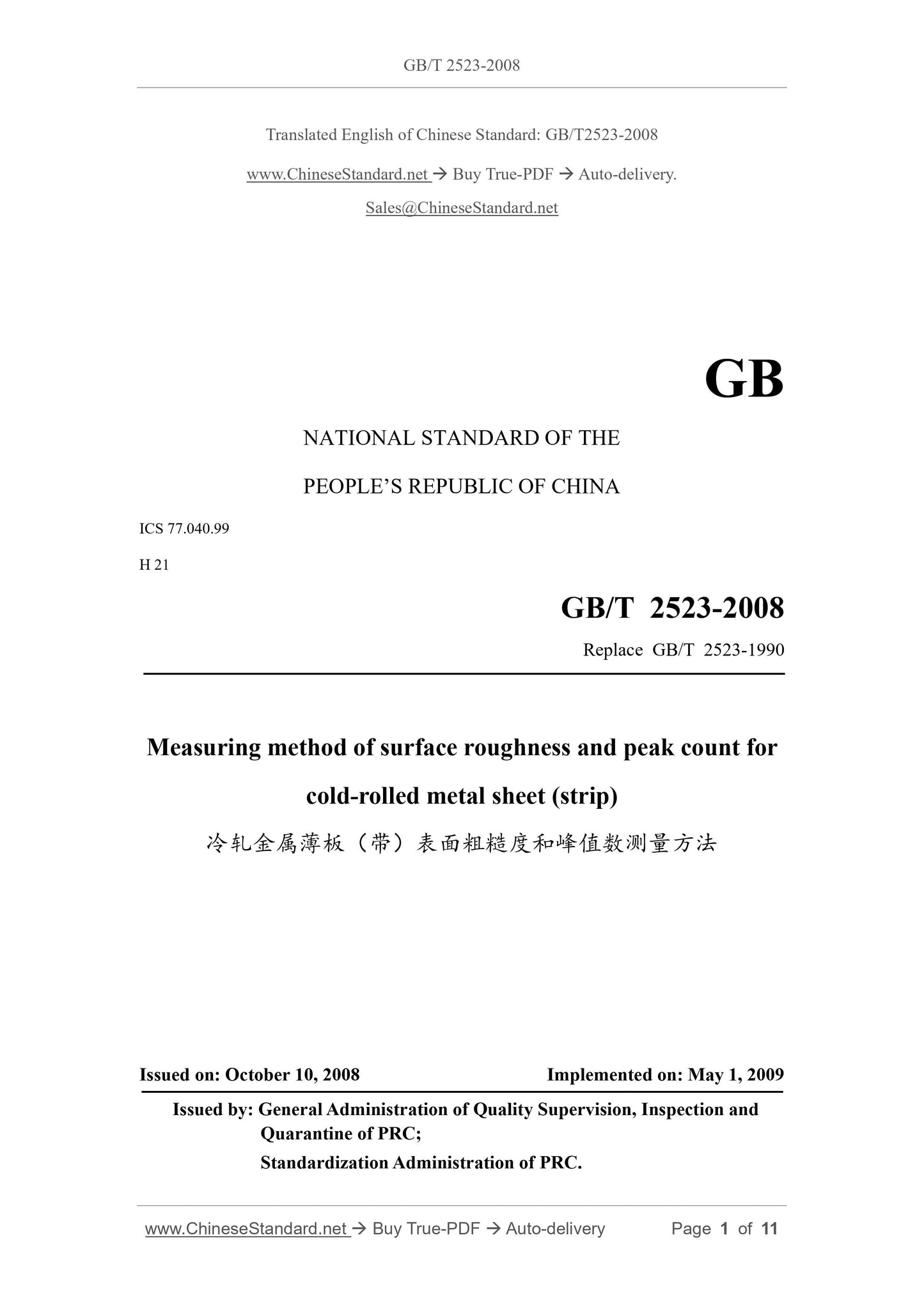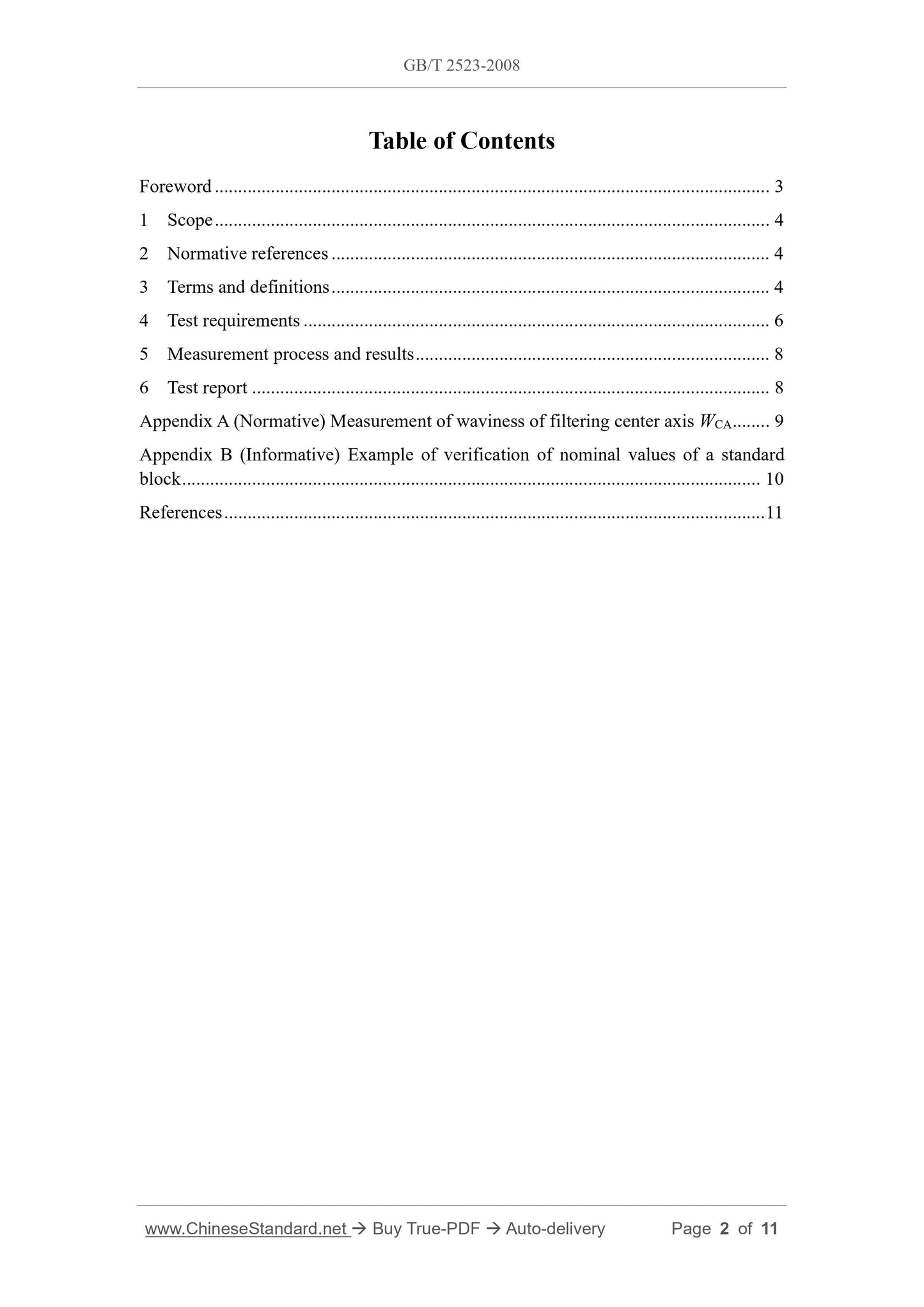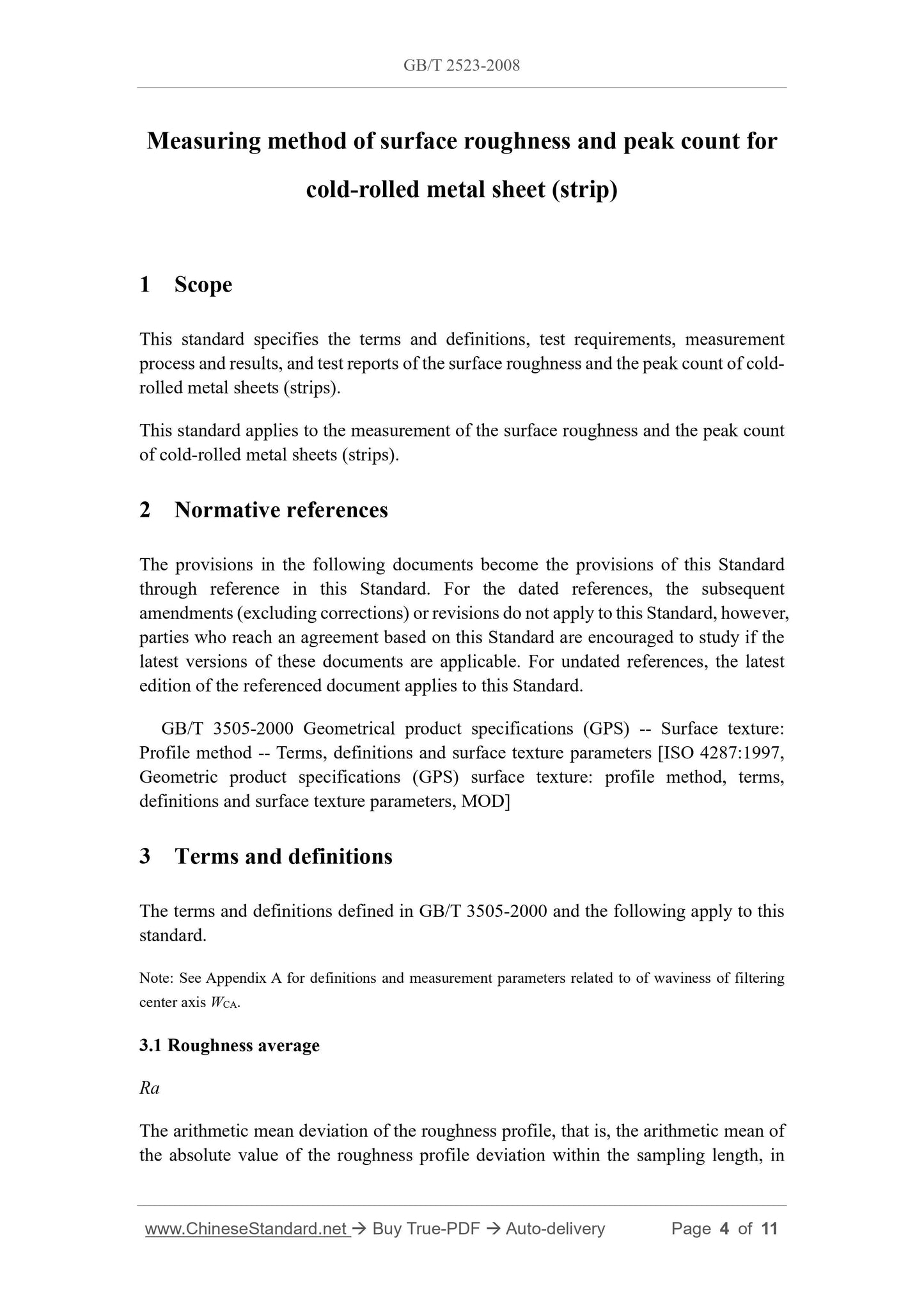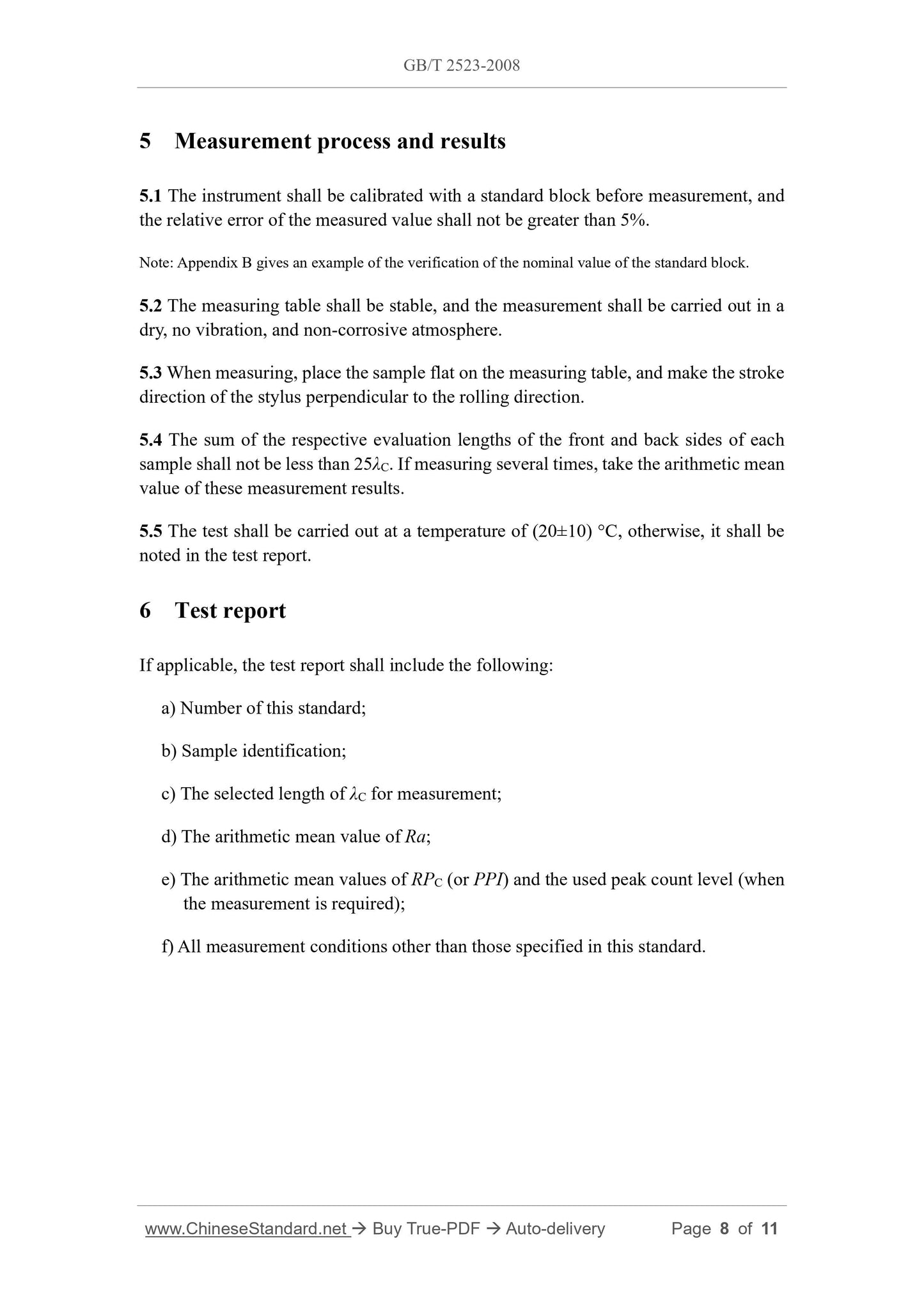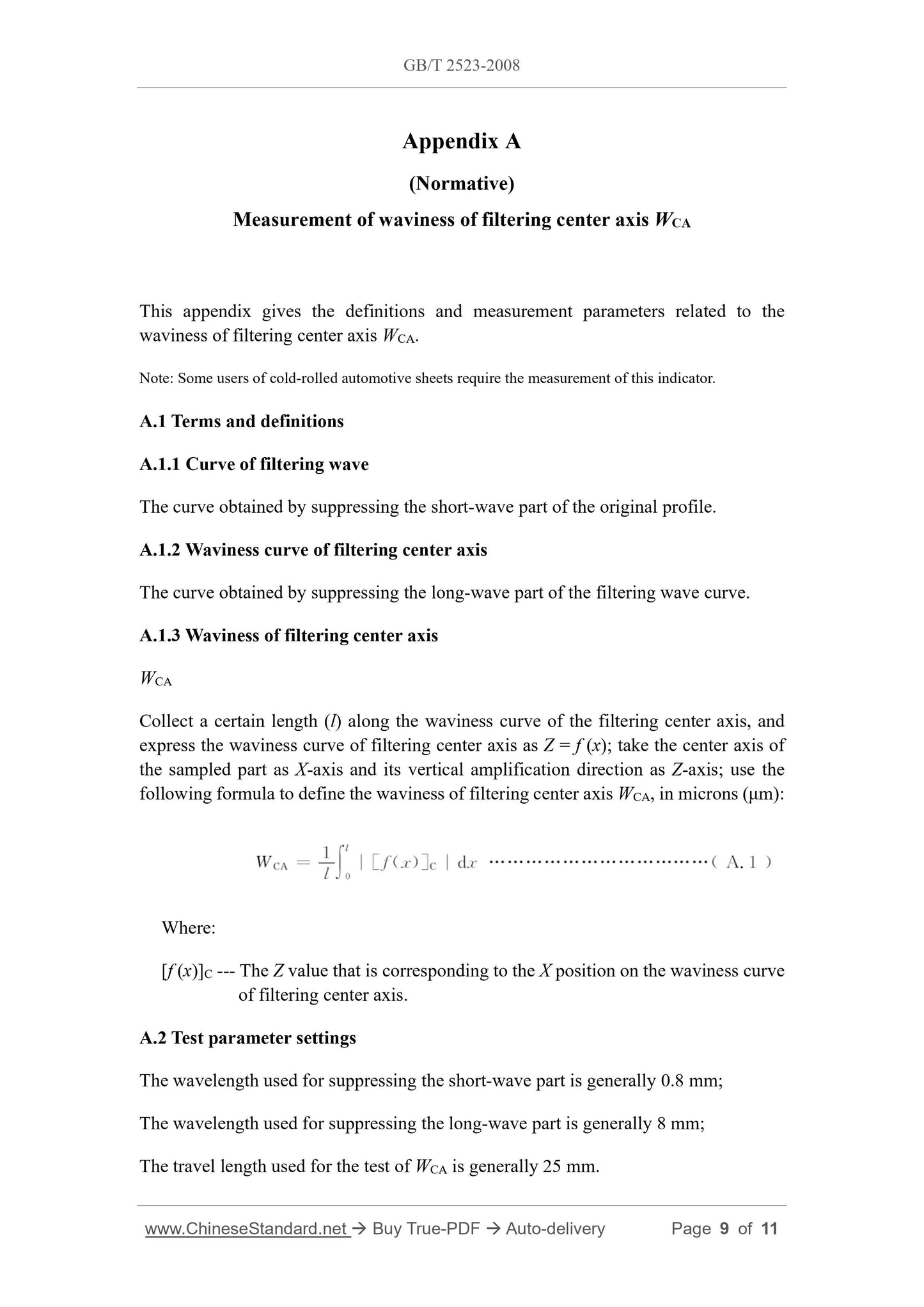1
/
of
5
PayPal, credit cards. Download editable-PDF & invoice In 1 second!
GB/T 2523-2008 English PDF (GB/T2523-2008)
GB/T 2523-2008 English PDF (GB/T2523-2008)
Regular price
$165.00
Regular price
Sale price
$165.00
Unit price
/
per
Shipping calculated at checkout.
Couldn't load pickup availability
GB/T 2523-2008: Measuring method of surface roughness and peak count for cold-rolled metal sheet (strip)
Delivery: 9 seconds. Download (and Email) true-PDF + Invoice.Get Quotation: Click GB/T 2523-2008 (Self-service in 1-minute)
Newer / historical versions: GB/T 2523-2008
Preview True-PDF
Scope
This standard specifies the terms and definitions, test requirements, measurementprocess and results, and test reports of the surface roughness and the peak count of cold-
rolled metal sheets (strips).
This standard applies to the measurement of the surface roughness and the peak count
of cold-rolled metal sheets (strips).
Basic Data
| Standard ID | GB/T 2523-2008 (GB/T2523-2008) |
| Description (Translated English) | Measuring method of surface roughness and peak count for cold-rolled metal sheet (strip) |
| Sector / Industry | National Standard (Recommended) |
| Classification of Chinese Standard | H21 |
| Classification of International Standard | 77.040.99 |
| Word Count Estimation | 9,933 |
| Date of Issue | 2008-10-10 |
| Date of Implementation | 2009-05-01 |
| Older Standard (superseded by this standard) | GB/T 2523-1990 |
| Quoted Standard | GB/T 3505-2000 |
| Adopted Standard | SAE J911-1998, NEQ |
| Regulation (derived from) | National Standard Approval Announcement 2008 No.17 (Total No.130) |
| Issuing agency(ies) | General Administration of Quality Supervision, Inspection and Quarantine of the People's Republic of China, Standardization Administration of the People's Republic of China |
| Summary | This standard specifies the terms and definitions of cold-rolled sheet metal (with) the surface roughness and the peak number, testing requirements, measurement process and results and test reports. This standard applies to the measurement of cold-rolled sheet metal (with) the surface roughness and the peak number. |
Share
